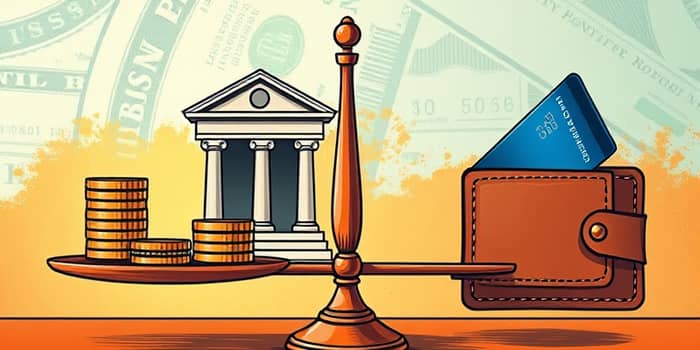
Choosing between borrowing options can feel overwhelming when faced with unexpected expenses or debt consolidation needs. Understanding how each tool works equips you to make a confident decision and regain control of your finances.
Personal loans deliver a one-time lump sum disbursement directly into your account. You negotiate a fixed amount, interest rate, and repayment term—commonly ranging from two to seven years—before signing the agreement. Once funded, you begin a structured predictable repayment schedule, ensuring you pay down principal and interest at set intervals until the loan is repaid.
Because rates are fixed for the term, you avoid surprises. Borrowers often choose personal loans for large, planned expenses such as home repairs, medical bills, or comprehensive debt consolidation. Though origination fees—anywhere from 1% to 8% of the loan principal—may apply, the transparency of fees and interest can simplify budgeting.
A credit card offers a revolving line of credit, letting you borrow up to a preset limit, repay, and borrow again as needed. Each billing cycle you can pay the minimum due, the full balance, or any amount in between. Interest rates on carried balances are variable and can climb to 30% or higher.
Credit cards excel at instant access to funds, making them ideal for everyday purchases, travel expenses, or emergencies. Alongside flexible borrowing, many cards include rewards programs, purchase protections, and introductory 0% APR offers lasting six to eighteen months. Yet the ease of swiping can lead to overspending and lingering debt if payments are not managed diligently.
Interest costs constitute the most significant factor in your borrowing decision. According to the Federal Reserve, average personal loan APRs range from 12.33% for 24-month terms up to 18.68% for excellent-credit borrowers. In contrast, credit card APRs average between 20.12% and 24.72% as of late 2024, with some rates exceeding 30%.
With a personal loan, you follow a fixed monthly payment plan, making it easier to forecast cash flow and avoid surprise interest hikes. The debt extinguishes after the agreed term, often boosting financial confidence and freeing up credit capacity.
Credit cards, by contrast, offer no set end date. Paying only minimums prolongs repayment and compounds interest. However, disciplined borrowers who clear balances monthly can leverage cards without incurring finance charges while benefiting from rewards and consumer protections.
Both tools can build credit when used responsibly. A personal loan adds an installment account, diversifying your credit mix and potentially raising your score. Conversely, credit cards influence your utilization ratio: carrying balances above 30% of your limit can harm your rating.
On-time payments are critical. Miss a payment on either tool, and you face late fees, interest rate spikes, and damage to your credit history. Maintaining low balances on cards and steadily paying down installment loans signals fiscal responsibility to future lenders.
Your choice depends on your specific needs, credit profile, and financial goals. Consider a personal loan if you have a substantial one-off expense such as debt consolidation, major home improvements, or medical costs. The predictable schedule and often lower APR can save thousands over time.
Opt for a credit card when you need short-term borrowing flexibility—for travel, everyday essentials, or sudden emergencies—and you’re confident you can pay in full. The potential to earn cash back or travel points adds value for disciplined spenders.
Deciding between a personal loan and a credit card hinges on balancing structure and flexibility. By weighing interest rates, fees, repayment plans, and potential credit impacts, you can select the tool that aligns with your financial journey.
Ultimately, the best borrowing option is one you manage responsibly. Whether you choose a personal loan or a credit card, commit to a clear strategy, timely payments, and prudent spending to build a stronger financial future.
References













